Related Research Articles

Charles Proteus Steinmetz was an American mathematician and electrical engineer and professor at Union College. He fostered the development of alternating current that made possible the expansion of the electric power industry in the United States, formulating mathematical theories for engineers. He made ground-breaking discoveries in the understanding of hysteresis that enabled engineers to design better electromagnetic apparatus equipment, especially electric motors for use in industry.
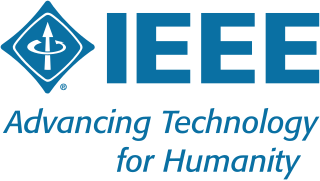
The Institute of Electrical and Electronics Engineers (IEEE) is an American 501(c)(3) professional association for electronics engineering, electrical engineering, and other related disciplines.
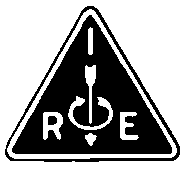
The Institute of Radio Engineers (IRE) was a professional organization which existed from 1912 until December 31, 1962. On January 1, 1963, it merged with the American Institute of Electrical Engineers (AIEE) to form the Institute of Electrical and Electronics Engineers (IEEE).
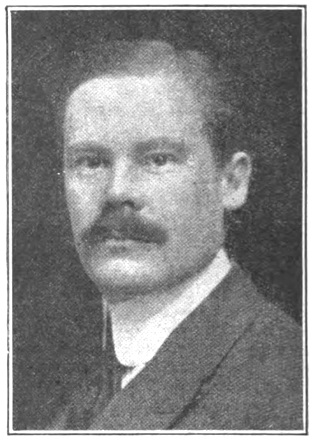
Ernst Frederick Werner Alexanderson was a Swedish-American electrical engineer, who was a pioneer in radio and television development. He invented the Alexanderson alternator, an early radio transmitter used between 1906 and the 1930s for longwave long distance radio transmission. Alexanderson also created the amplidyne, a direct current amplifier used during the Second World War for controlling anti-aircraft guns.
The American Institute of Electrical Engineers (AIEE) was a United States-based organization of electrical engineers that existed from 1884 through 1962. On January 1, 1963, it merged with the Institute of Radio Engineers (IRE) to form the Institute of Electrical and Electronics Engineers (IEEE).

Albert Wallace Hull was an American physicist and electrical engineer who made contributions to the development of vacuum tubes, and invented the magnetron. He was a member of the National Academy of Sciences.
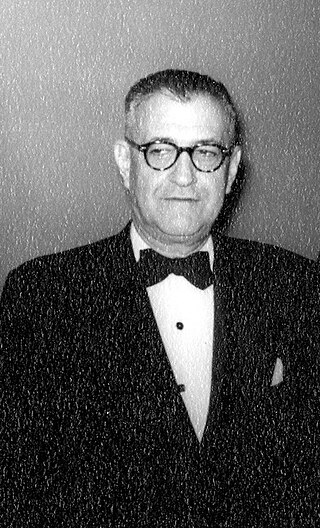
Walter Ransom Gail Baker was an American electrical engineer. He was a vice president of General Electric, and was Director of Engineering for the Radio Manufacturers Association. At the urging of James Lawrence Fly, Chairman of the Federal Communications Commission (FCC), Baker founded the National Television System Committee, or NTSC, in 1940. He served as president of the Institute of Radio Engineers (IRE) in 1947.
Dr. Lawrence Jerome Fogel was a pioneer in evolutionary computation and human factors analysis. He is known as the inventor of active noise cancellation and the father of evolutionary programming. His scientific career spanned nearly six decades and included electrical engineering, aerospace engineering, communication theory, human factors research, information processing, cybernetics, biotechnology, artificial intelligence, and computer science.

Alfred Norton Goldsmith was a noted American electrical engineer.
Dr. Leonard F. Fuller was a noted American radio pioneer. In 1919, Fuller earned a PhD degree at the Stanford Department of Electrical Engineering. In World War I, he was part of the antisubmarine group of the National Research Council, and charged with the design and installation of the "high-power transoceanic radio telegraph stations" built by the United States Army and Navy. He held 24 patients for inventions before his death. He spent time as chair of the electrical engineering department at University of California, Berkeley, and then was acting professor of electrical engineering at Stanford University from 1946 until he retired in 1954.
Patrick Eugene Haggerty was an American engineer and businessman. He was a co-founder and former president and chairman of Texas Instruments, Incorporated (TI). Under his leadership, the company grew from a small Texas oil exploration company into a global leader in the semiconductor industry. During his tenure, TI invested in transistors when their commercial value was still much in question, created the first silicon transistor, the first commercial transistor radio, the first integrated circuit, and helped develop and produce the first single chip microprocessor.
Donald Glen Fink was an American electrical engineer, a pioneer in the development of radio navigation systems and television standards, vice president for research of Philco, president of the Institute of Radio Engineers, General Manager of the IEEE, and an editor of many important publications in electrical engineering.
The Proceedings of the IEEE is a monthly peer-reviewed scientific journal published by the Institute of Electrical and Electronics Engineers (IEEE). The journal focuses on electrical engineering and computer science. According to the Journal Citation Reports, the journal has a 2017 impact factor of 9.107, ranking it sixth in the category "Engineering, Electrical & Electronic." In 2018, it became fifth with an enhanced impact factor of 10.694.
Harold Adelbert Zahl was an American physicist who had a 35-year career with the U.S. Army Signal Corps Laboratories, where he served as the director of research at Fort Monmouth and made major contributions to radar development. He invented the GA-4 Transmitter-Receiver Tube and the VT-158, which became known as the Zahl tube.
William Alden Edson was a scientist and engineer specializing in vacuum tube oscillators, radar, antennas and microwave technologies. His work spans universities, research institutions and commercial ventures. He taught at Illinois Institute of Technology, Georgia Institute of Technology and Stanford University.
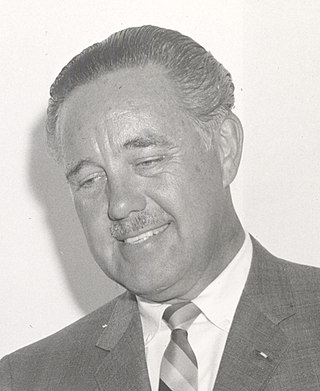
Winston Edward Kock was an American electrical engineer and musician, who was the first Director of NASA Electronics Research Center in Cambridge, Massachusetts, from September 1, 1964, to October 1, 1966. The center was created for multidisciplinary scientific research, its proximity to certain colleges, its proximity to a local U.S. Air Force research facility, and was perceived as part of the nation's cold war effort.
William Earle Bradley Jr. was an American engineer and businessman who was the first president of the Society for Industrial and Applied Mathematics. He spent much of his career in research at Philco. He also spent 10 years doing government work and founded a water-purification business.
The Valdemar Poulsen Gold Medal, named after radio pioneer Valdemar Poulsen, was awarded each year for outstanding research in the field of radio techniques and related fields by the Danish Academy of Technical Sciences. The award was presented on November 23, the anniversary of Poulsen's birth. The award was discontinued in 1993.
Charles Herach Papas was an American applied physicist and electrical engineer, known for his contributions to electromagnetic theory, microwaves, radiophysics, gravitational electromagnetics, astrophysics, guided waves, and remote sensing.
Georges Armand Deschamps was a French American engineer and Professor Emeritus at the Department of Electrical Engineering at University of Illinois at Urbana-Champaign. He is best known for his contributions to electromagnetic theory, microwave engineering and antenna theory. He is also regarded as an early pioneer of microstrip and patch antennas, which he proposed in 1953.
References
- ↑ "Alfred Carter Genealogy". Genealogy of Ken Hinds. Hinds Site. Retrieved 2012-04-22.
- ↑ James Aitcheson. "Descendants of Fearchar McFinlay". Genealogy.com. Retrieved 2012-04-22.
- 1 2 3 4 5 "E. Finley Carter". Proceedings of the I.R.E. 32 (8). IEEE: 444. August 1944. doi:10.1109/JRPROC.1944.232401.
- 1 2 3 4 "E. Finley Carter". Global History Network. IEEE . Retrieved 2012-04-22.
- ↑ "Contributors". Proceedings of the I.R.E. 33 (10): 728. October 1945. doi:10.1109/JRPROC.1945.231192.
- ↑ "Alumni Hall of Fame: Bruce Graham". SRI International. Archived from the original on 2013-07-01. Retrieved 2013-06-13.
- ↑ "Awards to Staff by Professional Societies". SRI International. Archived from the original on 2012-10-03. Retrieved 2013-07-01.
- ↑ "IEEE Founders Medal Recipients" (PDF). IEEE. Archived from the original (PDF) on January 21, 2012. Retrieved November 23, 2010.